Udzungwa Mountains Trekking
Udzungwa Mountains National park is an ideal place for adventurous activities such as trekking, forest walks, hiking and mountain climbing. With presence of several trekking trails established in the mountains with different range of length and time starting from few minutes to several days the Udzungwa Mountains has indeed hiking expedition for everyone regardless of the fitness, time and budget. The most popular trekking trail of all is the Sanje trail which heading up the mountains through the Sanje waterfalls which is one of the main attraction of Udzungwa.
During Udungwa Mountains trekking climbers will walk through beautiful forest which range from miombo woodlands, bamboo forest, low land forest, montane forest to highland grassland. Along the trekking visitors can see different bird species and primtes. Udzungwa Mountains is said to have 10 species of primates which 4 among them do not found anywhere in the world. The endemic primate species of udzungwa include the Iringa (Uhehe) red colobus monkey, the Sanje-crested mangabey, the Amani mountain dwarf galago (bush baby) and the Matundu galago. Other primates include blue monkeys, thick-tailed galago, black and white monkeys. The park is also a home to other animals such as red duiker, bush pigs, blue duiker, sun squirrel and bushbuck.
Bird’s lovers can also enjoy trekking Udzungwa Mountains because the place is known as the birds paradise with over 400 bird species recorded. Birds like rufous winged sunbird and Udzungwa partridge can easily spotted during the trekking. The park is also a home to over 1300 species of butterfly where by 121 are endemic to Tanzania. For people who go for a long trekking like 3 days and above through the less accessible part of the park will get the chance to see game animals such Lion, leopard, buffalo and hippos.
History Of Udzungwa Mountains National Park
Udzungwa Mountains National Park was established in 1992 and it is the part of the Eastern Africa Mountains Arc which extends from Taita Hills in Kenya, Pare and Usambara Mountains to Uluguru Mountains and Udzungwa. The Udzungwa mountains park covers an area of 1,990 square Kilometers with a wide range of altitudes with the highest point 2,576 meters at Luhombero Peak.
The main characteristics of the Udzungwa Mountain forests range from miombo woodlands, bamboo forest, low land forest, montane forest to highland grassland. Known as the Eastern Afromontane Hotspot Udzungwa contains 10 species of primates which 4 among them do not found anywhere in the world. The endemic primate species of udzungwa include the Iringa (Uhehe) red colobus monkey, the Sanje-crested mangabey, the Amani mountain dwarf galago (bush baby) and the Matundu galago. Other primates includes blue monkeys, thick-tailed galago, black and white monkeys. The park is also a home to other animals such as red duiker, bush pigs, blue duiker, sun squirrel and bushbuck.
Udzungwa Mountains National Park is also a known as bird paradise with over 250 species of birds recorded include the rufous winged sunbird and Udzungwa partridge. The park is also a home to over 1300 species of butterfly where by 121 are endemic to Tanzania.
Game animals which found in Udzungwa include Lion, leopard, buffalo and hippos. These animals are found in the less accessible part of the park.
Udzungwa Mountains Trekking Trails
Udzungwa Day Trip / Trekking Experiences
Prince Bernhard Falls - 1 km, 1/2 hr, height gain 30-80 m
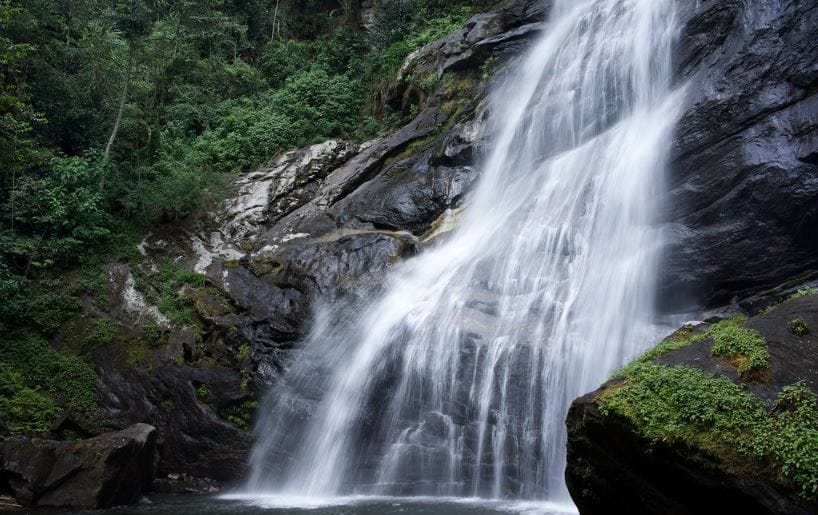 The Prince Bernhard trails was named after prince of the Netherlands who was the president of the World Wildlife Fund at the time when Udzungwa Mountains National Park is gazetted. .
The Prince Bernhard trails was named after prince of the Netherlands who was the president of the World Wildlife Fund at the time when Udzungwa Mountains National Park is gazetted. .
Starting just behind the park headquaters the Prince Bernhard trails is the shortest trail in trekking Udzungwa Mountains ideal for every one. This trail has the best scenery and beautiful small two waterfalls. In addition to that several insects such as butterflies and small wild birds can be observed during the trekking. Also during trekking Udzungwa Mountains along this trail you can observe about four species of Primates such as Yellow Baboon (Papio cynocephalus), the Blue Monkey (Cercopithecus mitis), the Angolan Black and White Colobus (Colobus angolensis), and the rare and endemic Red Colobus of Iringa (Piliocolobus gordonorum) can be spotted.
For vistor who intend to trek Udungwa Mountains along the long trails can take the Prince Bernhard Falls trail as a warm up preparation for their trekking.
The ideal time requires to trek Udzungwa mountains along this trail is only 1/2 hr but visitors with more time can extend it to a bit more distance.
Sonje Waterfall Trail - 3 km, 1- 2 hr, height gain 120m
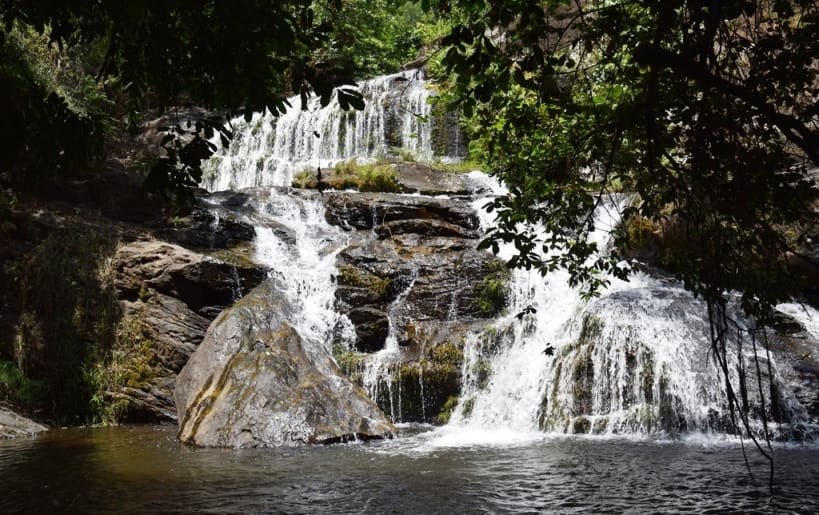
Sonje Waterfalls Udungwa
The second shortest Udzungwa Mountains Trekking trail to the bottom of the Sonje waterfall after 20 minutes of hiking from starting point. The second waterfalls is found 15 minutes of trekking up a steeper path. These falls are pretty good enough to attract any person who loves nature. You can spend sufficient time here walk around the circuit, taking pictures and after that trek down to the starting point following different path.
Sanje Waterfall Trail - 6 km, 4 - 5 hr, height gain 450 m
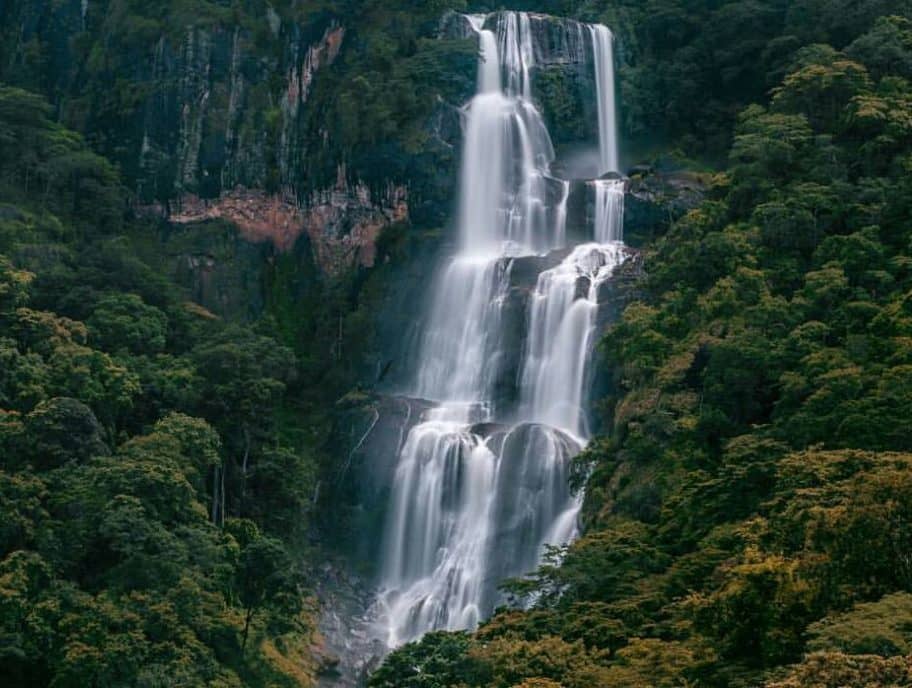 Sanje trail is the most popular trekking trail to the top of Udzungwa Mountains. Trekking Udzungwa Mountains along this trail starts from the park headquarters along the steep slopes of the eastern side of the mountains. The trail extends across large hilly semi-humid and humid sub-mountain forest formations, to the Sanje waterfalls where water drops for about 180 meters. You can enjoy swimming in the refreshing plunge pool of the top waterfall (around 40 m high).
Sanje trail is the most popular trekking trail to the top of Udzungwa Mountains. Trekking Udzungwa Mountains along this trail starts from the park headquarters along the steep slopes of the eastern side of the mountains. The trail extends across large hilly semi-humid and humid sub-mountain forest formations, to the Sanje waterfalls where water drops for about 180 meters. You can enjoy swimming in the refreshing plunge pool of the top waterfall (around 40 m high).
The total time required to trek the entire trail distance of 12 km up and down is 4 -5 hours. The scenery along this trail is amazing with a panoramic view of the Kilombero Valley. Several endemic animal species such as Red Colobus of Iringa (Piliocolobus gordonorum) and endemic plants can be seen during trekking.
The best time to trek Udzungwa Mountains along Sanje is the morning hours where the sun rays are direct hitting the waterfalls. However the trekking can be done any time of the day despites of the high temperature experienced in the midday.
Njokamoni Trail - 5 km, 4-5 hr, Height gain 400m

Njokamoni trail take between 4 to 5 hours of trekking the distance of about 5 km. This trail pass behind the Hondo Hondo Camp to the Njokamoni waterfalls. When trekking Udzungwa Mountains along this trail you will have the high chance to the Sanje Mangabey and troupes of monkeys. Other animals that can be seen and is very similar to the Sanje trail except a lot less walked. As a result, it is common to see many troupes of monkeys with a better chance of seeing the Sanje Mangebey. You may also see red duiker, elephant shrews, squirrels and other rare forest mammals.
Trekking Udzungwa Mountains along Njokamoni trail you will to start from TANAPA HQ and end the walk 1km down from Hondo Hondo Camp.
Hidden Valleys Trail (Campsite 3 trail)- 14km, 6-8h, height gain 1000m
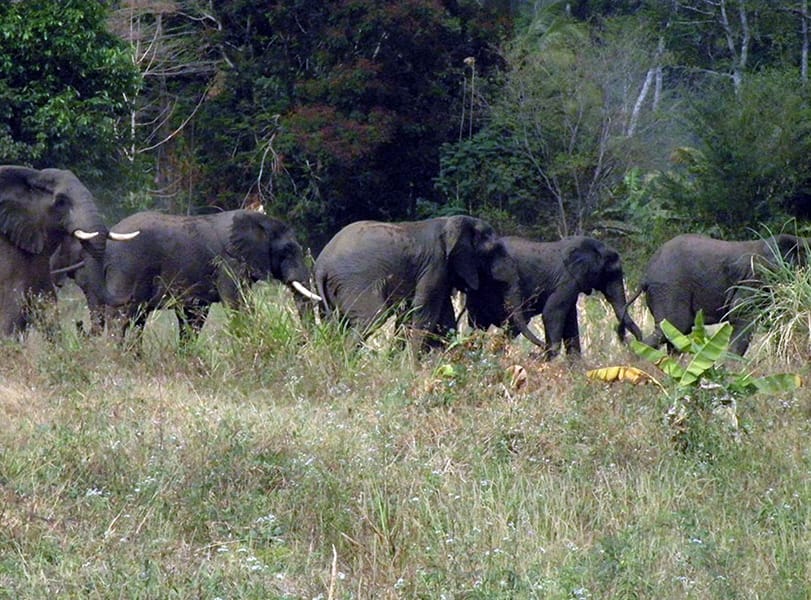
This trail starts from campsite 3 a short distance from the park headquarters towards the Njokamani waterfall. Since this trail pass across the hidden valley with grass plains where a number of animals are found, visitors are escorted by an armed ranger to ensure for their safety. Elevation along the trail is also steeper so the trek is requires to start in the early morning to make sure they reach the summit which stands at 130m above sea level.
Overnight Trekking Experiences
Mwanihana Peak - 3 Days , 38 km, 3 days, height gain 1850m
Udzungwa Mountains national park trekking along Mwanihana trail takes two to three days with overnight stay in tents in the tropical forest. The trek start few kilometers away from the park headquarters and it passes through the Eastern slopes of Mt. Mwanihana. It then goes through semi-humid hilly forests, humid sub-mountain forests, pluvial mountain forests, and short stretches of high-mountain moorlands, and reaches the highest peak at about 2,400 meters of height.
Some endemic animals and plants can be observed when trekking along this trail. The total length of the trail is about 20 kilometers. There is the possibility to observe several endemic vegetal and animal species. This trail is not difficult and it is ideal for wilderness lovers as it provides more exposure to the African wilderness.
Sanje Waterfall Trail - 2 Days, 9 km, height gain 450m
Although Sanje trail is reknown for a day trek but it can also done 2 days to enable you get a true feel of the forest.by spending a night under the canopy. Trekking in the forest spotting wildlife and splashing in waterfall, at night sleep under a piece of clothes listening to the sound of the forest.
Lumeo Trail - 5 days, 65 km
Lumeo is longest and most arduous trail in Udzungwa. Visitors who trekking Udzungwa Mountains have to be transferred to the start of the trail which is beyond Ifakara on the Lumeno River. From here they will hike up into the hills for 4 nights, returning along the same trail as Mwanihana not far from Hondo Hondo, where they will be picked up and brought back to the camp for a nice shower and drinks. The Lumeo trail leads deep into the heart of the Udzungwas, ascending ridges, and descending into two deep valleys – areas where few people have ever been and the wildlife there has had virtually no contact with humans. You need to be a competent hiker in good physical condition to attempt this trail.
Mbatwa Trail - 2 to 3 days
Udzungwa Trekking through Mbatwa trail takes 2 to 3 days of hike for back and forth with overnight stays in tents. This trail starts at Mbatwa ranger post through the western slope of Udzungwa Mountains with its departure point at Mikumi-Iringa road at the small village of Mtandika. The slopes are gentle along this trail and its vegetation characterized of thorny scrubs and dry and thin woodland tropical formations, often scattered with imposing Baobab (Adansonia digitata) and Candelabra Tree (Euphorbia candelabrum) specimens. The route lead to the large and windy top plateaus at over 2,000 m of height, with Cool Mountain pastures and stretches of high-mountain semi-humid forests. The total length of this trail is about 20 kilometers.
Kilombero River - 1 day
This tour is mainly conducted outside the Udzungwa Mountains National Park at Kilombero River. Drive for about 2 to 3 hours from Mang’ula to Ifakara Ferry Boat of Ifakara where you will embark into a canoeing safari along the Kilombero River. Discover various fluvial environments with full of interesting aquatic flora and fauna. During the canoeing safari you will see various aquatic birds and several specimens of Nile Monitor (Varanus niloticus), Nile crocodile (Crocodylus niloticus), and Hippo (Hippopotamus amphibius).
The pirogue which will be used during the canoeing are made from tree trunks.
Udzungwa Mountains Facts
Attractions
Spectacular Mountain Scenery
When trekking Udzungwa Mountains visitors can see a combination and variety of landforms, valleys, forests and the geology makes UMNP a unique beauty. The mountains rear steeply from the surrounding plains, rising to lush peaks, severed in places by escarpments of sheer rock. From the top of Mwanihana Peak, visitors who trekking Udzungwa mountains are rewarded with views of the vibrant forest below and of the lowlands of Kilombero Valley that spread toward the Selous.
Waterfalls
Udzungwa Mountains National Park has several rivers that cascade into breath taking waterfalls and give superb and panoramic view as they winds over undulating landscapes. The magnificent Sanje Waterfalls; the largest waterfalls in the national park system in Tanzania with three stages; first with 170m, second with 30m and third with 70m; descending down to views of sugar cane plantations. Other waterfalls include Prince Bernhard, Njokamoni, Sonjo, Msolwa and Mwaya. These waterfalls provide potential attractions to tourists with a unique experience for close observations.
Game animals
The animals which found in Udzungwa include Lion, leopard, buffalo and hippos. These animals can be seen by visitors who trek into less accessible part of the park.
Butterflies
Over 250 species of butterflies including the endemic Charaxes Lucyae Mwanihanae, Papilio hornimanii Mwanihanae and Baliochilla Mwanihanae have been identified making udzungwa an ideal place for those who wish to see this paradise of butterfly.
Reptiles
During trekking Udzungwa Mountains visitors can see a number of Reptiles and Amphibians with the endemic Udzungwa lizards (Cnemaspis Udzungwae) and (Phrynobatrachus Udzungwensis) also with endemic chameleons are also available.
Primates
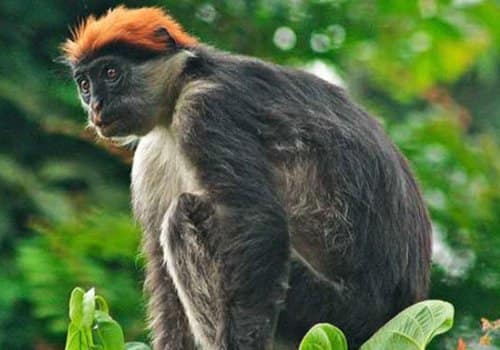
Udzungwa is a primate park and currently 11 species has been identified. Among of them two species found nowhere else in the world, the Sanje Crested Mangabey (Cercocebus galeritus sanjei) and Iringa Red Colobus Monkey (Colobus gordonolum).
Kilombero Valley
The Kilombero Valley is an exceptional resource found outside the park. It covers the entire area immediately east of the park and is drained by Kilombero River whose tributaries originate in the Udzungwa Mountains National Park. The valley has great aesthetic appeal when viewed from certain points in the park during trekking. It also serves as a potential tourist attraction as it provides a variety of potential visitor opportunities including hunting in the Kilombero Game Controlled Area, fishing, canoeing, rafting and other water sports in the Kilombero River. Visitors for Udzungwa Mountains trek who have sufficient time can also visit Kilombero valley and explore its beauty.
Natural Spring
Natural springs on the upper stream of the catchment forest forming various permanent rivers (Lofia, Msosa, Mwaya, Mkula, Rumemo, Sonjo, Ruipa) that flow and pour water to the famous Kilombero Valley. Visiting this spring’s listening water spashing on the rocks leaves a memory to remember.
Getting To Udzungwa Mountains
The Udzungwa Mountains are mountain range in south-central Tanzania. The mountains are mostly within Iringa Region, south of Tanzania’s capital Dodoma. The national park is located about 60km from Mikumi national park, 360km west of Dar es Salaam. Visitors who come for trekking, hiking, climbing, walking, or camping in Udzungwa Mountains can reach here by either of the following means:
Road: The Park can be accessed by road network from Dar es salaam (380km) or from Arusha, Kilimanjaro and Mbeya.
Train: TAZARA railway from Dar Es Salaam to Zambia that passes through local town of Mang’ula takes you close to the park’s gate.
Air: Charted flights through nearby two airstrips of Msolwa and Kilombero
